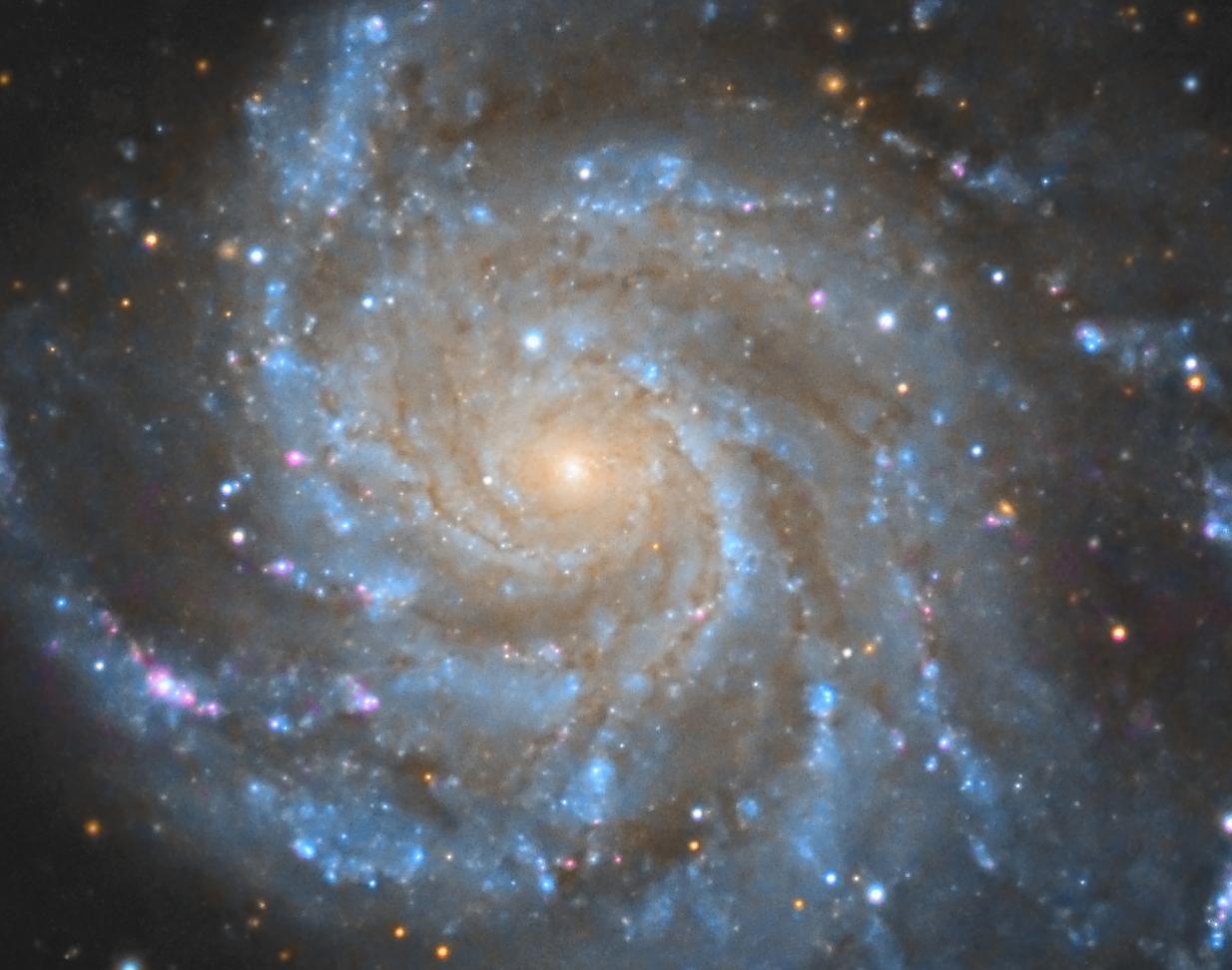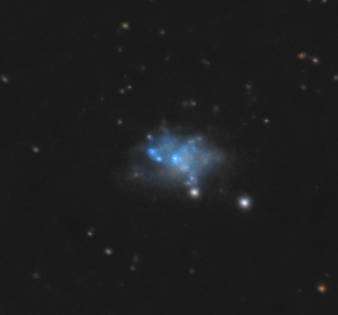While being located “only” around 17.5 Million light years from earth, it is probably one of the hardest Messier objects to photograph, due to its dim surface brightness. It does take very long exposure / integration times to get strong details, especially on the faint outliers.
The galaxy itself is home to around 1 trillion star systems, making it quite a bit bigger than our own Milky Way. It’s irregular shape had made the galaxy a very interesting research topic for astronomers and astrophysicist. It is theorized that the irregular shape came from merging with another galaxy and / or with strong gravitational interactions with its surrounding neighbors.
I am quite happy with the results, there is a lot of detail visible in the core of the galaxy:

The blue glowing regions are active star forming regions. Most likely these are areas where a lot of hydrogen gas / dust collapsed due to the gravitational forces the galaxy has experienced in the past. Resulting in young type O stars which shine in a very bright blue. Whereas the red glowing regions are regions of hot / ionised hydrogen gas, which are also the birthplace of new stars. Some of these regions have been catalogued in the NGC (New Galactic Catalogue) and are therefor annotated in the image viewer (if you activate annotations).
These regions are basically nebulas in another galaxy, which is quite crazy if you think about it, especially the fact that this is so well visible in my amateur telescope.
Next to Messier 101 (or The Pinwheel Galaxy) lay some smaller dwarf galaxies, like NGC5477, as marked in the annotations of the image.

A (incomplete) list of all the other galaxies in this photo:
| Name | Luminosity [mag] | Distance form earth |
|---|---|---|
| Messier 101 | 7.86 | 23 Million Light Years |
| NGC5477 | 14.01 | 22 Million Light Years |
| PGC2469762 | 14.44 | 1.128 Billion Light Years (z) |
| PGC2816075 | 17.60 | 1.147 Billion Light Years (z) |
| PGC2468609 | 13.0 | 1.105 Billion light Years (z) |
| PGC2464645 | 14.34 | 90 Million Light Years (z) |
| PGC49919 | 14.9 | 86.9 Million light Years (z) |
Data source: SIMBAD (https://simbad.cds.unistra.fr/simbad)
The distance values with (z) were calculated through measured redshift using the expanding universe and Hubble’s
constant.
